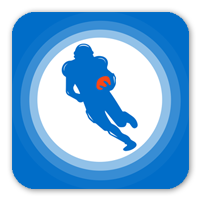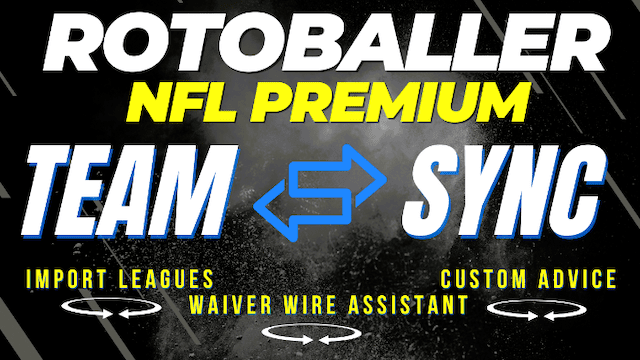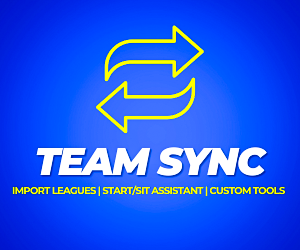Collin Hulbert reviews the major NFL Combine events to give insight to their true worth in terms of fantasy football analysis for 2020.
The other day, a friend asked for my opinion on a restaurant he'd read a review on. I told him, “In my experience, it was amazing. I liked the style in which certain dishes were prepared. It’s not for everyone, but if you like things the particular way they make them, you’ll love it.” It’s a lot like the NFL Combine. Certain players have strengths in some areas everyone likes (40 times), but nearly all players will have some deficiencies. What may matter to some doesn’t really matter as much to others. The entire thing is relative.
There are certain attributes star players have that separate them from their peers in the NFL. For guys like Antonio Brown and Cooper Kupp, they’re just two among hundreds of current and former NFL stars whose careers haven’t reflected their combine numbers. However, there are two sides to every coin and there’s some validity to the debate around the NFL Combine and whether the events matter. For every Cooper Kupp or Antonio Brown, there are 48 other guys who had bad Combines and never did anything worthy of mention in the NFL.
Before we talk about what events matter, we have to talk about the two types of people in NFL Combine debates.
Be sure to check all of our fantasy football rankings for 2025:- 2025 fantasy football rankings
- Running back (RB) fantasy football rankings
- Wide receiver (WR) fantasy football rankings
- Tight end (TE) fantasy football rankings
- Quarterback (QB) fantasy football rankings
- FLEX fantasy football rankings
- Defense (D/ST) fantasy football rankings
- Kicker (K) fantasy football rankings
- Dynasty fantasy football rankings
Combine Truthers
We hear the same chatter before every NFL combine. It typically revolves around discussions about whether hand size matters for a quarterback. We also hear about how critical a good 40-yard dash time is for everyone. Combine truthers will cite Jared Goff, whose hands measured just nine inches at the combine. Goff has fumbled 22 times over his past two seasons. Hand size is a legit concern for NFL teams, unless you’re a guy who maneuvers the pocket with both hands on the ball like Joe Burrow typically does.
In Burrow’s case, it shouldn’t be as important because of what he does to counter his hand size. Burrow tends to put two hands on the ball and usually displays keen pocket awareness. The combine truthers will also tell you that the ultra-instinctive players like Manti Te’o (who posted a 4.82 40-yard dash), simply can’t stay on the field in many situations. That’s a fair case and one there really isn’t a great counter for. The problem is, Terrell Suggs posted similar numbers and Vontaze Burfict ran a 5.09 40-yard dash. So, what’s a fair threshold? Is there even a threshold?
Combine Deniers
The combine deniers will cite Antonio Brown and Cooper Kupp as reasons why the combine doesn’t mean anything. Antonio Brown ran a 4.56 40 time, a 4.18 shuttle time, and a 6.98 three-cone drill. Those numbers would be decent for a linebacker or a tight-end. However, for a guy who’s barely 5’10" profiling as a great player in space and a solid possession receiver in college, it’s worrisome. Cooper Kupp ran a 4.62 40-yard dash. Anquan Boldin ran a 4.7 40-yard dash - dead last among receivers that year. The combine deniers will use these arguments to say, “Measurables don’t matter.”
So, who’s right? The truth is, both are right and wrong. The NFL Combine is a fitness test designed to put quantifiable data into a database so evaluators can get a better idea of your actual size, speed, and strength. It helps evaluators avoid constantly comparing your film and making assumptions against varying levels of competition. They want to know if you were able to overpower your blockers from Week 11 against Youngstown State the year prior because you’re actually strong, or if the guy blocking you was just weak.
The NFL Combine is a measuring stick that means more to some teams and less to others. Just as people love to say, “Well, this event doesn’t really matter much to us,” it may matter to other teams. So, just what should we focus on in the NFL Combine? Let’s take a look at some of the events and go through what actually matters for offensive players.
Height
Height matters more for receivers and tight ends than it does for quarterbacks. According to a University of Idaho report by Cole R Blender, the average height of an NFL Offensive lineman is six feet four and three quarters. The idea that a quarterback who is under six feet tall will struggle is a bit odd when you consider a quarterback at 6’1 should struggle just as much. When you consider both should be obstructed from a clear view downfield, why do we not hear that as much with the guys in the 6’0"-6’2" range?
For receivers and tight ends, height matters more. Plaxico Burress ran a 4.6 40-yard dash, but his size was unique and reflected his style of play at the position (great at jump balls, blocking out defenders, and positioning himself to have an advantage on contested balls). Burress’ 6’5" height meant his speed wasn’t as important as it would have been for someone who was 5’8"-5’11". The same is true for tight ends.
Hand Size
I touched on this earlier with Jared Goff. Goff has the same hand size as Joe Burrow and people are concerned. Hand size with quarterbacks is about judging whether a quarterback will be able to hold onto the ball under pressure, hold onto the ball on pump fakes, and ball security in bad weather. As much as we downplay it, it’s proven to matter to an extent.
The issue with applying it to Burrow is that Burrow protects the ball well. He uses two hands on the ball in the pocket and has demonstrated great pocket awareness in college. This past year, Burrow only fumbled four times in 15 games, and he managed to recover three of them. With receivers, hand size is associated more with an ability to grip the ball better and hold onto it through contact and contested catches.
Again, the key here is, “what does the tape tell us?” If a receiver has small hands and a propensity to fumble, based on how he holds the ball or carries it, his hand size is significant. If the receiver doesn’t have a propensity to fumble and he protects the ball well on tape, hand size shouldn’t be much of an issue.
40-Yard Dash Time
40-Yard dash times are tricky. I have personal experience to use as an example. When I was in college, I was working out for walk-on tryouts one spring. In preparation, I watched a few videos on proper form (even though I thought it was silly at the time). I had run a 60-yard dash a year prior and was timed at 6.9, so I wasn’t too worried about my 40 time. I developed a separate form to try in the 40 and said to myself, “I’m going to run my way first and then try the way I had practiced on my second attempt.” On the first attempt, I ran a 5.09 laser-timed. I was confused. I expected it would be slower than the “proper form” but had no idea it would be so much slower, even with the laser. The second time, I changed my form to the “proper form” and ran a 4.71. I felt like the second time was slower, but the form worked.
When I see guys running it at the Combine, I notice when they’re using proper form. So, if a guy runs a good time outside of the proper technique, I give that guy an added bump in my considerations for that player. The reason I value the guys who don’t utilize the proper form is that these guys are going to run this way on the field. The guys using the proper form aren’t running that way in a game, so why do we give them a bump in value during the combine?
“Track Speed” and “Game Speed” are two entirely different things. The combine organizers could simply put the guys in pads and have them run the events, but they choose not to. What’s even more of a factor than pads are blood oxygen levels and adrenaline levels. Neither of those can be measured at the combine, but both can have a massive impact on a guy’s speed in-game. Think back to playing the game yourself, or any other sport.
For me, I always ran sluggish for the first few plays. For whatever reason, it took around 10 minutes or me to get hit hard for it to kick-in and find my legs. Once it kicked in, I felt a surge of energy and it typically lasted the duration of the game. I recently heard an interview with a player who explained it like I just did. He said, “I just need to get hit early, so my adrenaline kicks in and I can get into gear.” Some players will get more of a boost than others, which is why it’s absolutely critical to not just look at a player’s 40 time. You have to watch tape too.
You have to apply some common sense with this stuff too. Not everyone is going to run their best on an event like this, outside a live-game scenario. Some guys just can’t run cold and put up good times. If a receiver runs a 4.5, I wouldn’t be shocked if the guy would eventually be considered one of the fastest guys in the league in a few years. We have numerous examples of players like this. If a receiver runs a 4.6, I’m not going to expect he’s ever going to be that fast. It might change your opinion on the perceived role in the offense that player can best succeed. If a receiver runs a 4.7, I’m concerned. At that point, he’d better be an excellent route runner or a tall, red-zone threat for me to consider him. As far as I’m concerned, if you run a 4.2 – 4.3 time, that’s just icing on the cake.
Do yourself a favor and look up the fastest receivers of all-time at the combine and tell me it actually made a difference. If you look up who the fastest 15 receivers since 2009, according to combine numbers, the list is pathetic. The most accomplished receiver in the group is Marquise Goodwin, the record-holder is John Ross. The elite receivers in the NFL typically run between a 4.4 and a 4.5. Don’t overthink it.
Strength Drills
If there’s anything more worthless in the NFL Combine, please let me know. How can anyone rationalize “bench press reps” as being an important event in the NFL for skill positions? In a sport where the average play lasts just a few seconds, explain to me why muscular endurance in your chest means anything for a wide receiver. If there was a 200-meter swim, it would be more relevant. At least that could give me a better understanding of a player’s cardiovascular fitness and endurance.
Agility Drills
Agility drills are helpful to evaluators in their quest to paint a better picture of a player. If a team sees a guy is agile on tape and he isn’t so much in person, all it’s going to result in is that team saying, “Maybe he’s not as quick as we thought.” Agility drills serve better to reveal some clues as to who a player might be able to become. If you have a short receiver with insane agility numbers who has decent hands and is good in space, that guy could serve well as a slot receiver. If you have a short receiver with average to below-average agility scores, you may just rule that guy out altogether if he’s a nobody, but if he has good college film, you may say to yourself, “He didn’t measure well, but if this guy goes undrafted, I want to bring him into camp to see him in action.” If you get a tall receiver with great agility, it can reassure you that this guy could legitimately turn into a great outside receiver. Evaluators have to look at the numbers and ask themselves, “can we utilize this guy in our offense?”
When you look at a guy like Cooper Kupp, he ran a decent time (4.12) on the 20-yard shuttle and a 6.75 on the three-cone. Those are decent times for the combine, but Kupp ran a 4.61 in the 40-yard dash. The 4.61 was a big red flag for some teams, but it shouldn’t have been. Kupp has demonstrated decent speed and agility at the NFL level, but his route running was so polished from day one, the speed issue wasn’t a major concern for the Rams. Kupp put up monster numbers at Eastern Washington. His college tape showed elite route-running potential. Even if you’re moderately slow for an NFL receiver, elite abilities at route running can offset speed deficiencies.
For D.K. Metcalf, he had tremendous straight-line speed but scored horribly on his agility drills. As a result, Metcalf slipped out of the first round and nearly all the way out of the second. Metcalf’s agility drills were ranked around #28 among receivers at the combine. Fast forward to 2019, and Metcalf was one of three rookie receivers in consideration for Offensive Rookie of the Year. So, did his agility drills matter? They didn’t matter much to the Seahawks, because the Seahawks were smart about it. The Seahawks integrated Metcalf into the offense by choosing to incorporate his strengths and limited the opportunity for his weaknesses to be exposed. Metcalf ran a lot of deep routes, crossing routes, sluggos, and hitch and go routes. It sounds elementary, but this is how you’re supposed to handle talent in the NFL at every position. Your goal is to put the guys in the best position to succeed. Cooper Kupp and DK Metcalf were no different. As far as I’m concerned, NFL teams need to adopt the Bill Belichick adage of, “Don’t tell me what he can’t do. Tell me what he can do.”
Parting Words
I’d like to take us back to one curious case that will leave you even more confused about the NFL Combine than you were when you started reading this article. It’s the tale of Antonio Brown. Antonio Brown is truly an odd case study, but certainly not the first of his kind, nor the last. In college, Brown was a solid receiver/returner, who ran decent routes, had great hands, and showed a lot of promise anytime he had the ball in his hands. On film, he seemed shifty, though not particularly quick. His top speed was good on film, but his level of competition at Central Michigan made it hard for anyone to be convinced he would be worth selecting in the draft. He was essentially a “B” version of what Tony Pollard was in college.
In the Combine, Brown ran a 4.56 40-yard dash and ran a 6.98 second three-cone. His sub-nine-foot broad jump was the worst among receivers that year. Brown was drafted in the sixth round by the Steelers and eventually blossomed into one of the fastest, most explosive receivers in the NFL. So, what does this mean for evaluations in the Combine?
It tells us that this is a test that measures a select group of young adults on their physical capabilities at the present time. It tells us the Combine doesn’t measure determination and work ethic. Sure, it can give you insight as to a player’s actual speed compared to their game film, but the true measurables are what the player does once he’s on a roster.
So, what did we learn about the Combine and what we should we take from the results this year? It’s a lot like online restaurants. You may read some questionable reviews because of the taste or the service, but until you expose it to your own palette or hold it accountable to your own level of etiquette, you won’t really know just how good it can be to you.
More Fantasy Football Analysis





 RADIO
RADIO
























